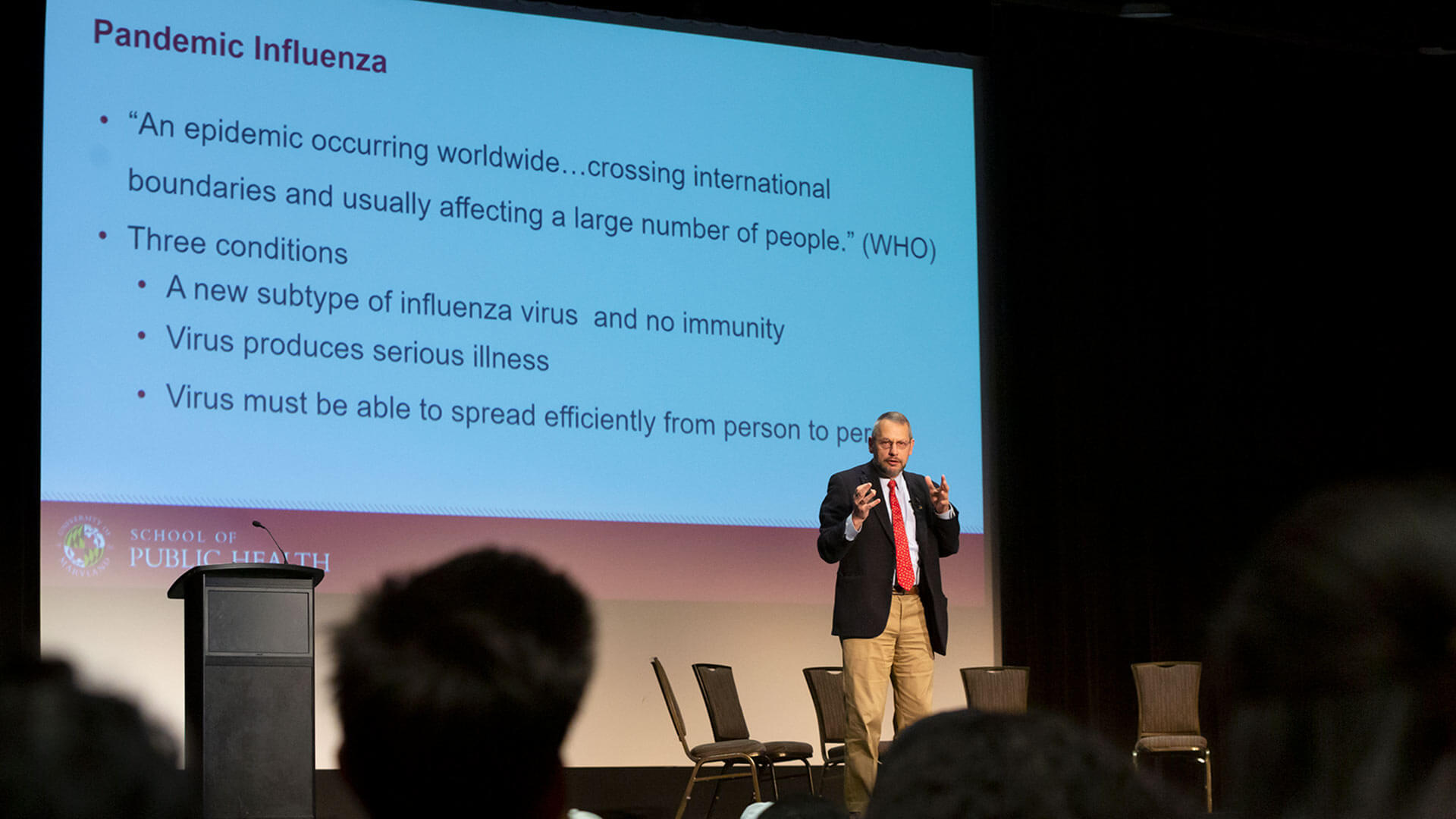- February 21, 2020
- By Sala Levin ’10
As the coronavirus outbreak continues to expand around the world, and definitive answers trail behind rising numbers of diagnosed cases, a School of Public Health symposium yesterday sought to shed some light on the emerging disease, its impact and the steps being taken to contain it and ultimately stop it.
In front of several hundred audience members in the Stamp Student Union’s Hoff Theater and with hundreds more watching online, University of Maryland experts talked about what is known—risk in the United States remains relatively low—what isn’t, and what public health scientists and advocates are doing in the face of this epidemic.
 The panel included presentations from Dean Boris Lushniak, M.D.; environmental health Professor Donald Milton, M.D.; Professor and Chair of Epidemiology and Biostatistics Hongjie Liu; and Endowed Professor and Horowitz Center for Health Literacy Director Cynthia Baur. Principal Associate Dean Dushanka Kleinman, D.D.S. moderated the event, providing context about the role public health experts can play in communicating clearly about the disease and collaborating to stem its spread.
The panel included presentations from Dean Boris Lushniak, M.D.; environmental health Professor Donald Milton, M.D.; Professor and Chair of Epidemiology and Biostatistics Hongjie Liu; and Endowed Professor and Horowitz Center for Health Literacy Director Cynthia Baur. Principal Associate Dean Dushanka Kleinman, D.D.S. moderated the event, providing context about the role public health experts can play in communicating clearly about the disease and collaborating to stem its spread.
If you missed it, here are five facts you might not have known about the disease:
- Despite heavy media coverage, the risk to people living in the United States is low. Photos of desolate streets in China might make people think, “If it could happen there, why wouldn’t it happen here?” said Baur. To date, 15 people in the U.S. have tested positive for coronavirus.
- The mortality rate of coronavirus within China is much lower than that of SARS: 2.3% for the new virus compared to 9.1% for SARS, said Liu.
- Symptoms may not appear for more than a week after transmission. “That makes this pretty different” from influenza or SARS, which was identified in China in 2003 and infected some 8,000 people, said Milton. COVID-19, as the disease this new coronavirus causes is called, can persist on metal, glass and plastic for up to nine days. It’s essential to disinfect surfaces and wash hands frequently. Other key recommendations include staying home and isolating yourself when you are sick and avoiding crowds and sharing poorly ventilated spaces.
- The World Health Organization has said it may take 18 months before a vaccine is available. When the 2009 influenza pandemic hit, a vaccine was produced fairly quickly because it was a tweak of existing flu vaccines, said Milton. Because of COVID-19’s novelty, a vaccine will require more research.
- This is not a pandemic yet, and may not become one. The coronavirus has now infected some 75,000 people— the vast majority in China—but it hasn’t met the World Health Organization’s definition of a pandemic. That would require it to occur worldwide, cross international boundaries and affect a large number of people, said Lushniak. “In the coming days and weeks, we’ll see if it becomes a pandemic or not,” he said.
Topics
Campus & CommunityTags
Public HealthUnits
School of Public Health